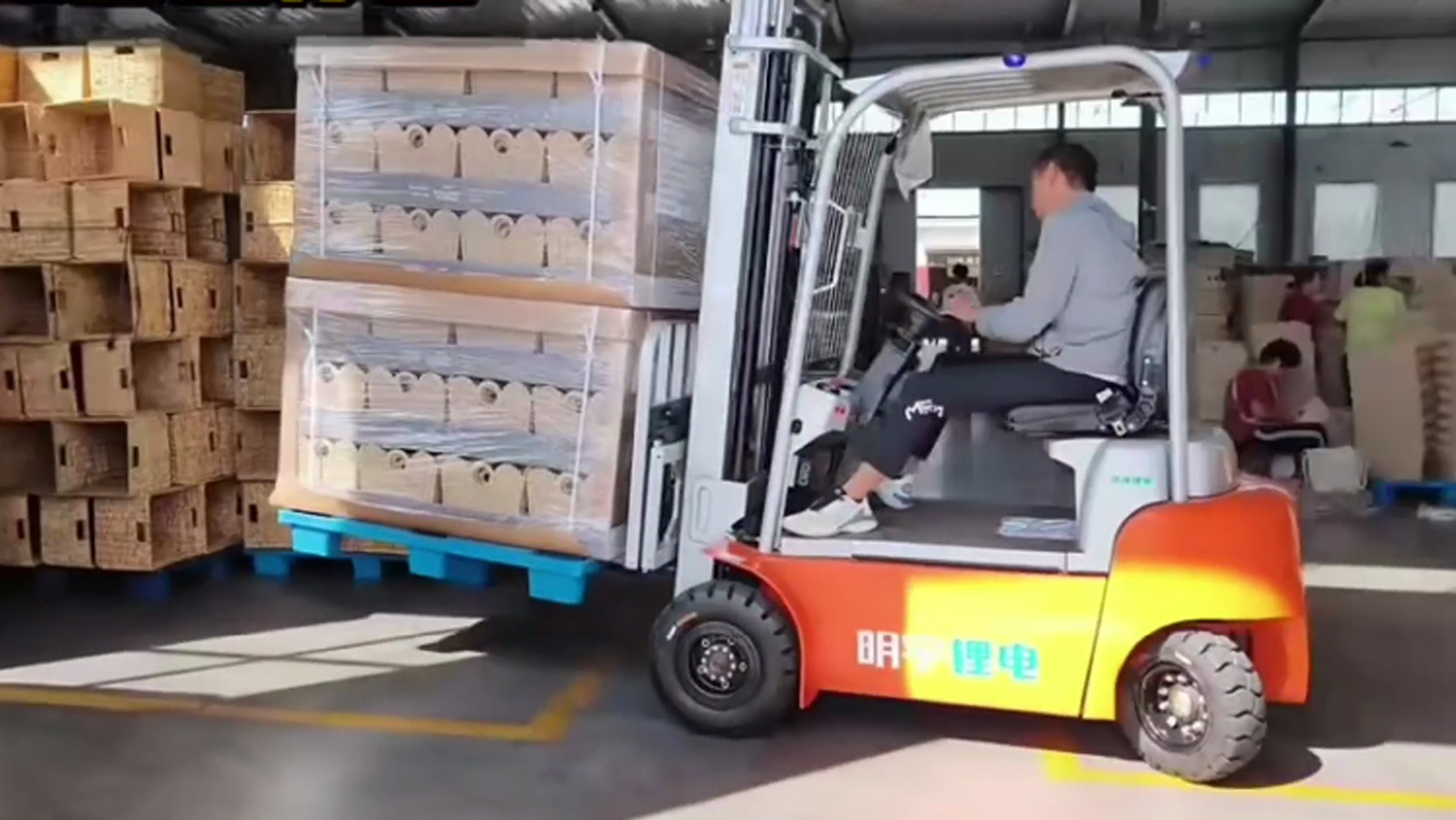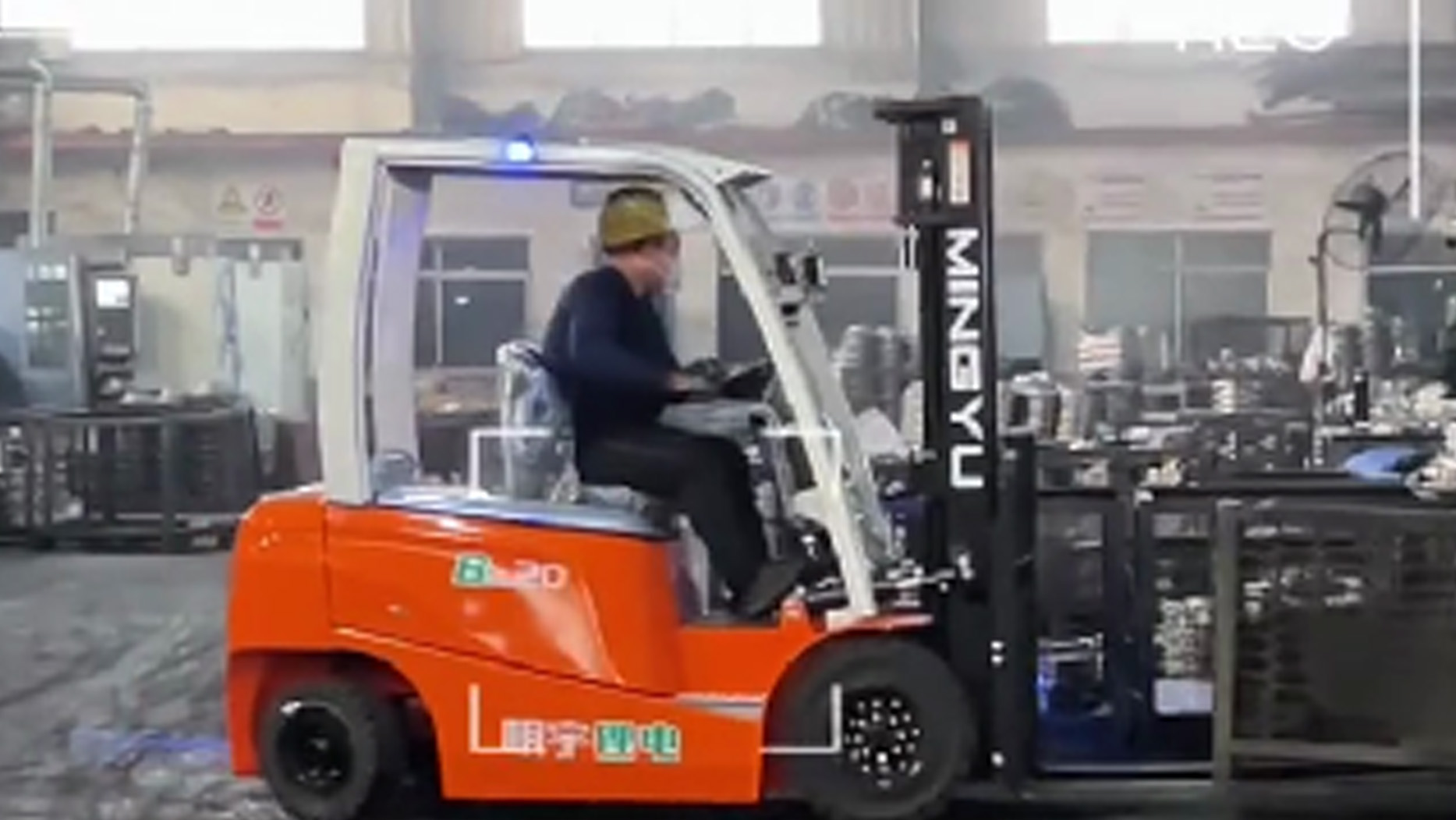1. Introduction
In the modern industrial world, forklifts are a crucial part of many businesses, helping with the efficient handling, transportation, and storage of materials. Among the various types of forklifts available, electric forklifts have gained significant popularity over the years, especially as businesses look for more eco-friendly, cost-effective, and efficient options. These machines have been adapted to meet the challenges of indoor and high-demand environments. Choosing the right forklift for your operation is crucial to improving productivity, reducing operational costs, and promoting safety. This article will explore the benefits of electric forklifts, why they should be considered for your business, and the key factors to take into account when choosing one.
2. What is an Electric Forklift?
An electric forklift is a type of forklift that is powered by electricity, typically through rechargeable batteries, instead of relying on an internal combustion engine. These forklifts are used in various industrial and warehouse settings for lifting, moving, and stacking materials. They offer a clean and efficient alternative to gas-powered forklifts and are ideal for use in indoor environments such as warehouses, retail spaces, and manufacturing floors.
Electric forklifts operate with an electric motor that drives the vehicle's wheels and lifts, powered by a battery pack. They are equipped with a range of features that make them suitable for different applications, including adjustable forks, lifting mechanisms, and safety features. Unlike traditional forklifts that run on diesel or gasoline, electric forklifts are generally quieter, require less maintenance, and produce fewer emissions, which contributes to a cleaner, healthier work environment.
3. Advantages of Electric Forklifts
Environmentally Friendly
Electric forklifts produce zero emissions, which makes them an excellent choice for businesses aiming to reduce their environmental footprint. This is particularly important in industries where sustainability is a priority or in indoor spaces where air quality must be maintained.
Lower Operating Costs
Electric forklifts are typically more cost-effective in the long run. With no fuel costs, businesses only need to account for electricity to charge the batteries. Additionally, electric forklifts have fewer moving parts compared to internal combustion engine models, meaning they generally require less maintenance and fewer repairs.
Quieter Operation
Electric forklifts are much quieter than their gas or diesel counterparts, making them ideal for indoor environments like warehouses, grocery stores, and hospitals, where noise can be disruptive. The quieter operation also helps improve safety by allowing operators to hear their surroundings more clearly.
Energy Efficiency
Electric forklifts are more energy-efficient than those powered by internal combustion engines. They use energy more effectively, converting more of the power into lifting force and minimizing wasted energy. This translates into longer operating hours per charge.
Lower Maintenance Requirements
Because they have fewer moving parts and don’t rely on combustion engines, electric forklifts tend to require less maintenance overall. The absence of components such as exhaust systems, fuel systems, and oil changes means there’s less to maintain and replace.
Improved Workplace Safety
With electric forklifts, the risk of carbon monoxide poisoning is eliminated, making them ideal for indoor use. Their smoother operation and quieter performance also reduce the likelihood of accidents in busy warehouse settings.
Less Vibration
Electric forklifts are known for offering a smoother ride due to the absence of a combustion engine, which generates vibration. This not only makes the operation more comfortable for the operator but also reduces the wear and tear on the equipment.
4. Applications of Electric Forklifts
Electric forklifts are versatile machines used in a wide variety of industries. Some of the most common applications include:
Indoor Use
Electric forklifts excel in indoor settings, where they are frequently used in warehouses, distribution centers, and manufacturing plants. Their compact size and ability to operate in tight spaces make them ideal for storing goods in high-bay racks or moving materials between aisles.
Cold Storage
Electric forklifts can be designed to work in refrigerated warehouses and cold storage environments. These environments often require specialized equipment to operate efficiently in low temperatures, and electric forklifts are increasingly adapted to meet this need.
Retail and E-commerce
Electric forklifts are perfect for retail environments, where they help organize stock and move materials quickly in backrooms and storage areas. They also play a crucial role in e-commerce warehouses, helping to manage large volumes of products.
Manufacturing and Assembly Lines
In manufacturing, electric forklifts are used to transport heavy components and finished goods between production stages. Their smooth operation and ability to work in confined spaces make them ideal for busy production environments.
Food and Beverage Industry
The food and beverage sector benefits from electric forklifts due to their ability to maintain a clean and hygienic environment. They are commonly used for lifting and transporting food and beverages in warehouses and distribution centers.
5. Comparing Electric Forklifts to Internal Combustion Forklifts
When considering forklifts for your business, it's important to compare electric models to traditional internal combustion forklifts.
Fuel Efficiency
Electric forklifts are more energy-efficient, using electricity for charging instead of fuel. While electric models typically have a higher upfront cost, they tend to have lower operating costs in the long run.
Cost Comparison
Electric forklifts generally have a higher initial purchase price, but they are often more cost-effective over time due to reduced maintenance and operational costs. Internal combustion forklifts may require frequent refueling and more extensive maintenance, which can add up.
Performance in Different Environments
Electric forklifts are best suited for indoor use or for working in controlled environments. Internal combustion forklifts are generally better for outdoor operations, especially in rough terrain or extreme weather conditions.
Environmental Impact
Electric forklifts produce no exhaust emissions, making them environmentally friendly. This is a critical advantage, especially for businesses that need to comply with strict environmental regulations or want to improve their sustainability efforts.
6. Choosing the Right Electric Forklift for Your Operations
Selecting the right electric forklift for your business depends on several factors:
Load Capacity: Determine how much weight your forklift will need to lift. Electric forklifts come in a range of capacities, so it’s important to choose one that suits your needs.
Lift Height: Consider the height of your racking systems and what lift height is required for your operation.
Battery Life and Charging: Electric forklifts require charging, so the duration and frequency of use will influence your decision. Additionally, ensure that you have sufficient charging infrastructure.
Maneuverability: Electric forklifts are available in a variety of sizes, with different turning radii. Make sure the forklift can maneuver in the space where you plan to use it.
Terrain: Electric forklifts are ideal for smooth surfaces, but if you plan to use them on rough terrain, consider additional features such as enhanced tires or off-road capabilities.
7. Cost Considerations for Electric Forklifts
While electric forklifts may require a higher upfront investment, the long-term savings are considerable. Factors to consider when assessing costs include:
Initial Purchase Price: Electric forklifts generally cost more than internal combustion forklifts.
Battery Life and Replacement: Batteries can be expensive to replace, but they last for a long time and have lower long-term costs than fuel.
Energy Costs: Charging electric forklifts costs much less than fueling internal combustion forklifts.
Maintenance Savings: The lack of a combustion engine means electric forklifts typically need fewer repairs and less frequent maintenance.
8. Common Myths and Misconceptions About Electric Forklifts
High Initial Cost: While electric forklifts may have a higher upfront cost, the overall savings in fuel and maintenance make them a better long-term investment.
Less Power: Electric forklifts are just as powerful as internal combustion forklifts, with many models able to handle heavy loads.
Only for Indoor Use: While electric forklifts are ideal for indoor use, certain models can be adapted for outdoor applications with appropriate tires and power systems.
Complicated Maintenance: Electric forklifts are simpler to maintain than internal combustion forklifts due to fewer moving parts and no need for oil changes or exhaust systems.
9. Maintenance and Battery Care for Electric Forklifts
Proper maintenance is crucial for ensuring the longevity and reliability of electric forklifts:
Battery Maintenance: Always charge the battery according to manufacturer guidelines and avoid overcharging or undercharging.
Hydraulic and Lift Mechanism Checks: Regularly inspect the forklift’s lifting mechanism for smooth operation.
Safety Protocols: Train operators on proper forklift usage and ensure they are aware of safety guidelines.
Routine Inspections: Ensure the machine is functioning well by performing regular checks on the battery, tires, and lift systems.
10. Future Trends in Electric Forklifts
The future of electric forklifts is exciting with advancements in battery technology, energy efficiency, and automation. Innovations such as lithium-ion batteries offer longer-lasting, quicker-charging solutions, while automated electric forklifts are becoming more common in modern warehouses. These technologies will continue to enhance the efficiency and sustainability of forklift operations.
11. Conclusion
Electric forklifts offer significant advantages over traditional forklifts, from environmental benefits to cost savings and smoother operation. They are an ideal solution for businesses looking to improve efficiency, reduce maintenance, and meet sustainability goals. When choosing the right forklift for your operations, consider factors like load capacity, terrain, and battery life. With the right investment and maintenance, electric forklifts can help businesses increase productivity, reduce operating costs, and contribute to a greener, safer workplace.
Post time:Apr.09.2025



